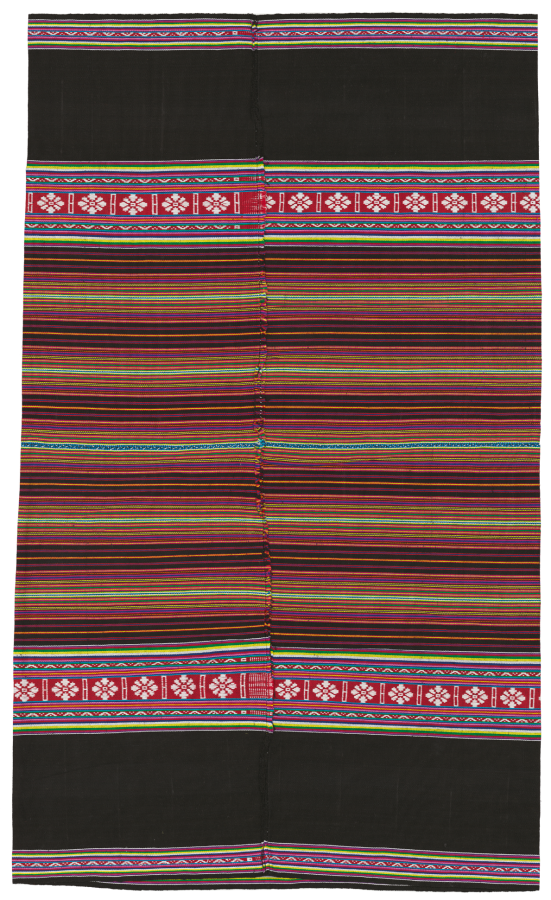Timor-Leste Commission: tais, culture and resistance
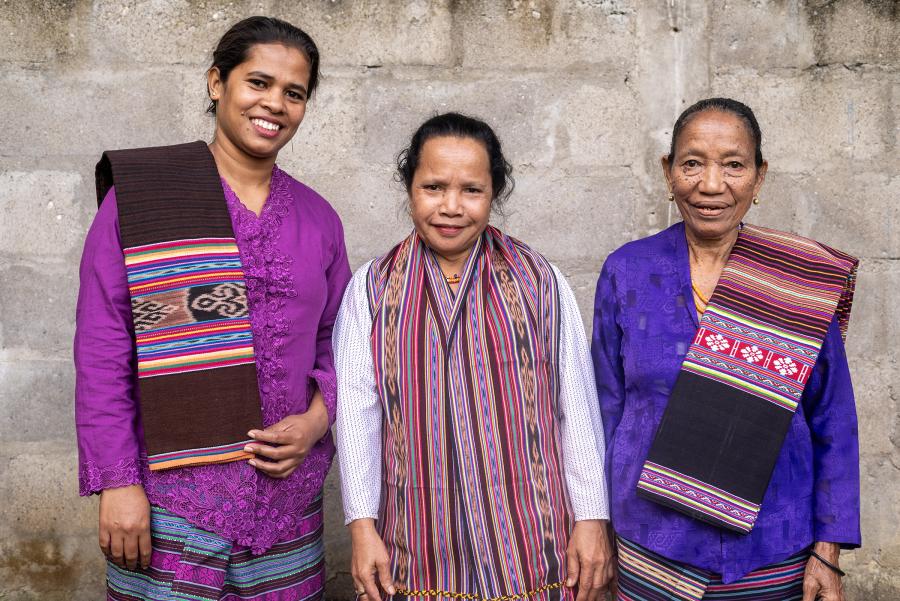
Three generations of LO’UD weavers proudly displaying two of the four Tais woven for the Australian War Memorial Tais Commission. Resistance fighter and leader of the Lospalos Weaving Group Marcelina Pinto (centre), with group members Juvina Barros (left) displaying the Tais Nunukala woven by her mother, and Angelina Maderia (right), weaver of the Tais Watahasa.
In 2021, the Australian War Memorial commissioned four traditional woven tais cloths from the LO’UD Cooperative (Koperativa LO’UD), a women’s weaving collective based in the Lautem Municipality of Timor-Leste. Founded in 2003, the collective brings together three weaving groups, two in Los Palos and another in the highlands of Iliomar. The name LO’UD signifies the interaction between communities and the mutual cooperation, honesty, and equality shared amongst its people.
Tais are considered of such importance to East Timorese culture that they were added to UNESCO’s List of Intangible Cultural Heritage in Need of Urgent Safeguarding in 2021. The four tais in the Memorial’s collection were selected by LO’UD for their cultural and ritual value. According to cultural lore, they are traditionally worn by a prospective bride during a reciprocal exchange ceremony when two families join in marriage. Cultural protocol guides each stage of the ceremony, with the tais representing unity between the families. Tais are worn by both men and women, symbolising the equal role women play in the exchange.
Tais are the most enduring cultural art form of Timor-Leste. Tais weaving brings generations of women together, expressing the strong sense of community in Timor-Leste, despite decades of violence, oppression and poverty. Tais symbolise the bravery and resilience of the East Timorese resistance movement during Indonesian occupation. LO’UD Cooperative was founded by female resistance fighters.
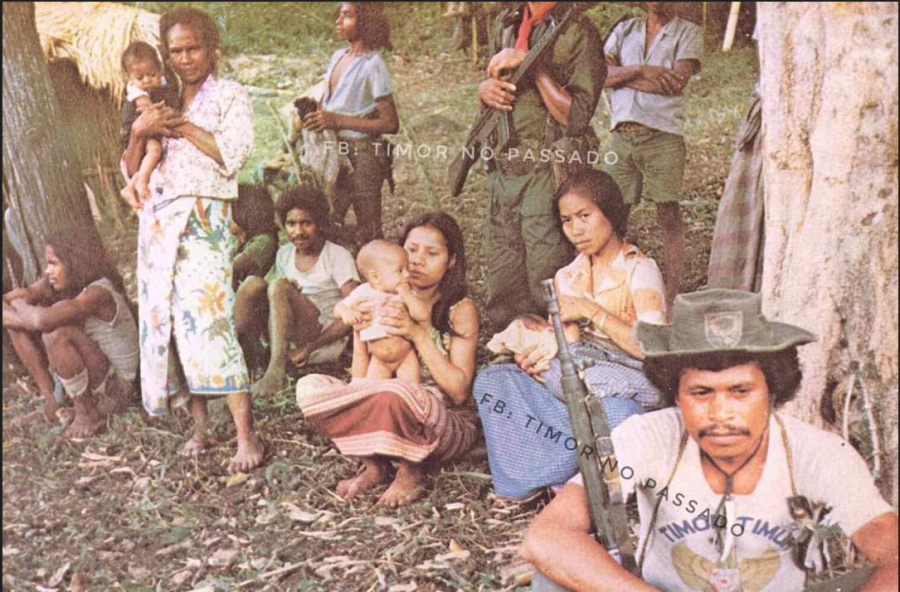
Guerilleiru Falintil Photo: TIMOR NO PASSADO, 1983
The four tais acquired by the Memorial relate to the traditions and rituals of the villages where LO’UD members originate. Many of the stripes and colours woven alongside the futus (ikat) panels contain symbols and concepts particular to their community. The futus weaving process includes resist dying techniques in which the threads are dyed before weaving commences. The tais created by LO’UD Cooperative are made with a mix of plant-dyed cotton and commercially dyed cotton, symbolising the merging of traditional and contemporary life in Timor-Leste.

Organic dyed cotton hangs out to dry in the sun.
Tais Nunukala was woven in Savarika Village by Olympia da Cruz, with warp threads prepared by the Los Palos Weaving Group. The traditional cotton was hand-dyed by master dyer Olinda Madeira. Nunukala means “orange mouth”, which is represented by the two orange bands at the edge of the cloth. This cloth is distinctive for its large sections of dark organic dyed cotton and the panels of futus weaving. The futus sections are decorated with symbols of Kawaili – gecko – which live amongst Timorese families.
In traditional weddings, women wear three tais. Aunts and sisters from the bride and groom’s families dress the bride for the marriage ceremony. It is considered bad luck for the mother to be part of this process. Nunukala is the first of the three tais the women place on the bride.
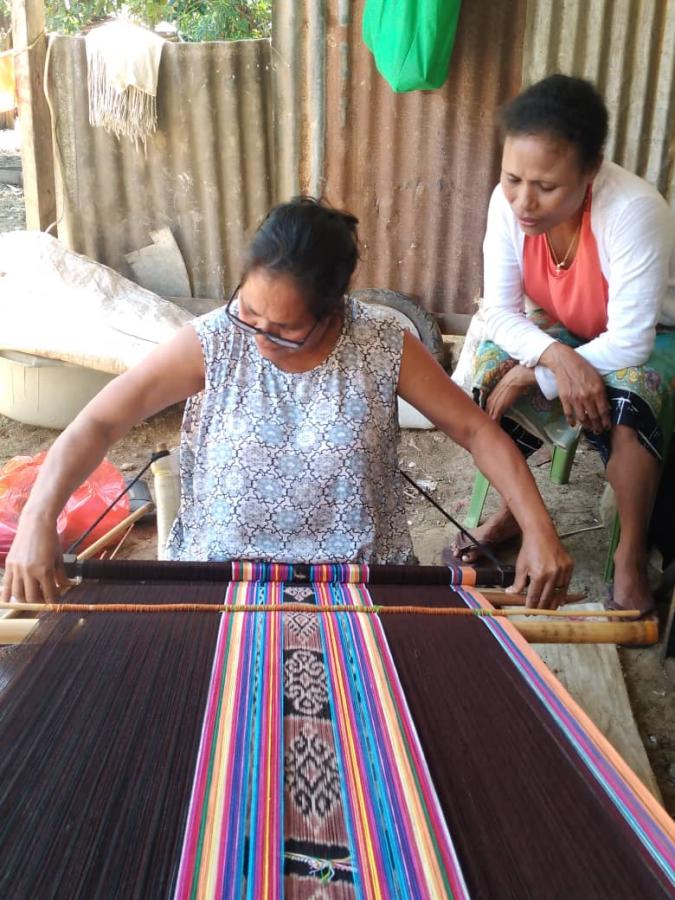
Olympia da Cruz, member of the Lospalos Weaving Group at the loom weaving the Tais Nunukala for the AWM. Photograph: LO’UD Lospalos, 2023.
Tais Pailale was woven by Sabina dos Santos with warp threads prepared by the Fuat Weaving Group in Fuat Viallage in Iliomar. The cotton was hand-dyed by master dyer Olinda Madeira. It features rows of white flowers, on a rich red background known as Aipun Rusa, woven using a technique known as Meli-meli. These flowers are unique to tais woven in Iliomar. The symbol of the rose has been passed down matrilineal lines over many generations, sacred designs that must be included in the Tais Pailale. This tais is the second of the three cloths placed on the bride during the marriage ceremony.
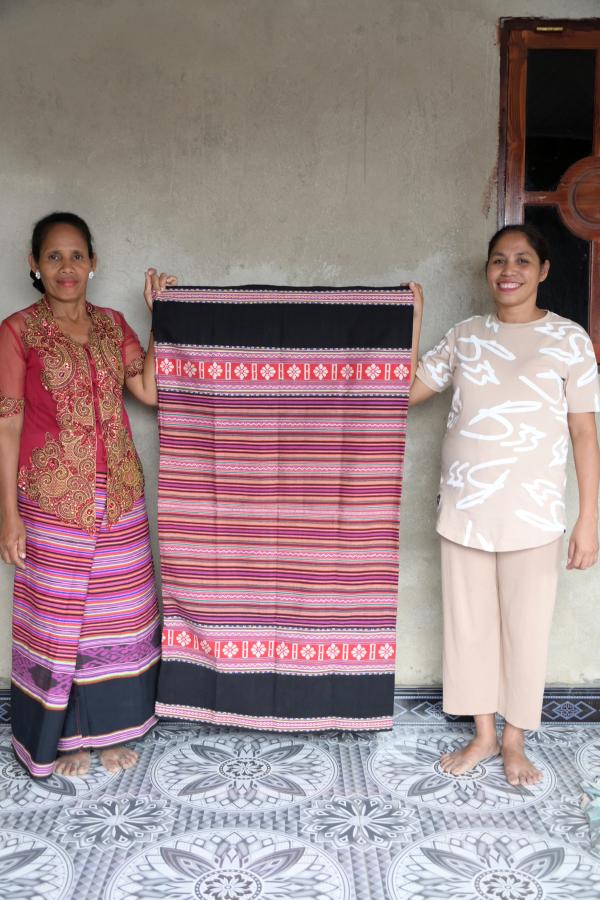
Sabina dos Santos, leader of the Fuat group proudly displaying the Tais Pailale with Amelia Fernandes, Administration Manager LO’UD. Photograph: Sally Gray, Fuat Village 2023.
Tais Naeleki was woven by Filomena da Cruz from the Caenlio Village Weaving Group in Iliomar with warp thread prepared by group members. The cotton was hand-dyed by master dyer Olinda Madeira. Naeleki is the last of the three tais placed on the bride. The Naeleki Tais contains two futus symbols, Kupa and Kawaili. Kupa translates as “I don’t know work”, and is included as a reminder to continue the customs and work practices handed down by ancestors (bei’ala sira), including tais making.
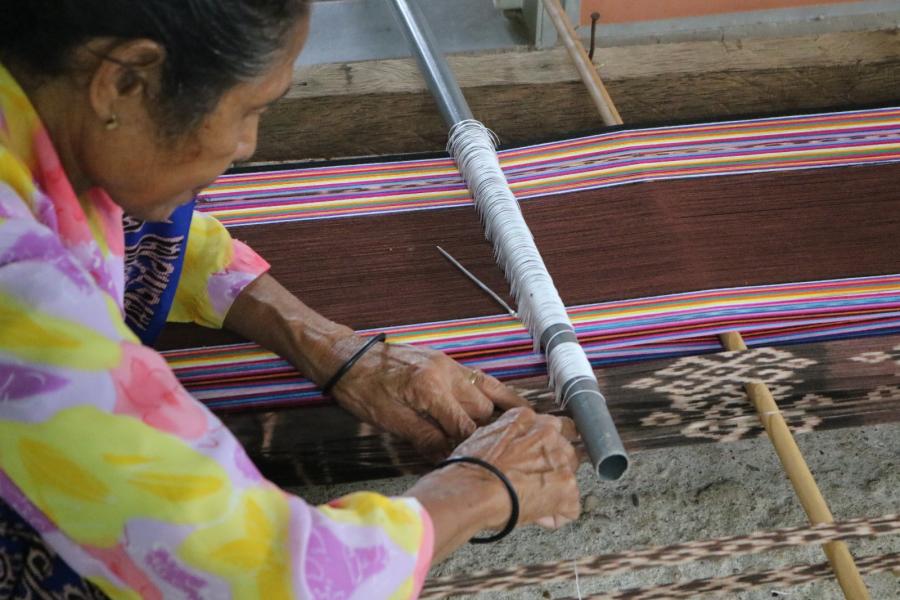
Master Weaver and founding member of LO’UD, Filomena da Cruz weaving Tais Naeleki.
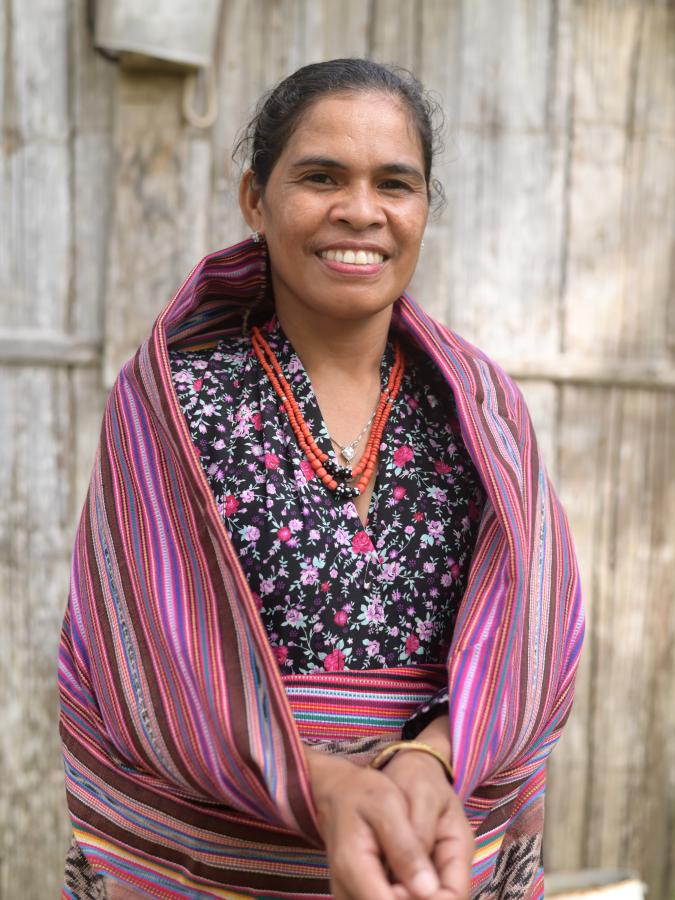
Dynamic leader of the LO’UD Cooperative in Timor-Leste, Ilda da Cruz wearing a Tais Naeleki.
Tais Watahasa is woven by elder weaver, Angelina Madeira, with warp threads prepared by the Los Palos Weaving Group. The traditional cotton was hand-dyed by master dyer Olinda Madeira. The schematic design of the Tais Watahasa is similar to the Tais Pailale, however its central panel is bright and uses distinctive pale green and blue threads. It contains two rows of white flowers on a rich red background known as Aipun Rusa.
The symbols woven into the tais cloths are hundreds of years old, originating from village ancestors. Tais may only carry a certain name if the sacred design aspects of each cloth are included along with specific stripes and weaving techniques associated with that village.
We are grateful to ETWA member Debra Salvagno who documented the schematic designs of each tais with LO’UD Cooperative Coordinator Ilda da Cruz in June 2023.
For more information about ETWA and LO’UD, visit www.etwa.org.au.

Women weavers of the LO’UD Cooperative. Photograph: Marcus Salvagno 2014.


